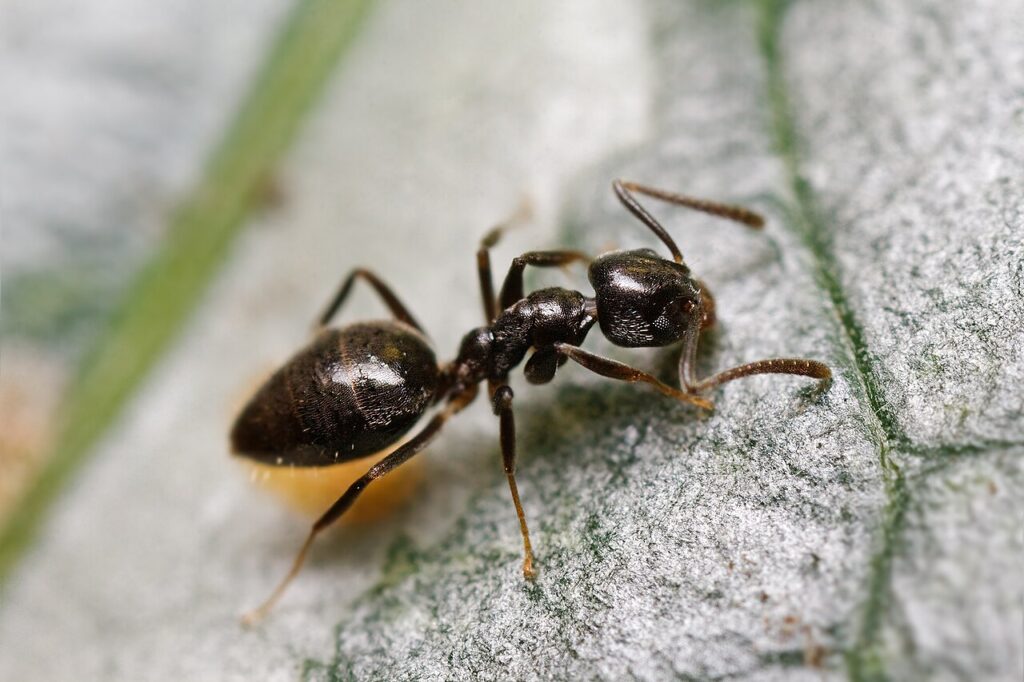
Appearance
The Odorous House Ant (Tapinoma sessile) measures about 1/8 inch long and varies in color from dark brown to black. These ants often get mistaken for Argentine ants due to their similar size and habits. However, you can distinguish Odorous House Ants by their darker coloration and strong, distinctive smell. When crushed, they emit an odor reminiscent of rancid butter, a key identifying feature. Pest control professionals frequently use this smell to confirm their presence. Additionally, they are attracted to sweet foods, which makes kitchens common hotspots for infestations.
Habitat and Behavior of Odorous House Ants
Odorous House Ants prefer to nest indoors, often choosing hidden locations like wall voids, under appliances, or in insulation. Outdoors, they establish nests under stones, mulch, or leaf litter. Their colonies tend to be smaller and more localized than those of Argentine ants. Moreover, their cooperative social structure allows them to efficiently gather food and care for their young.
Control of Odorous House Ants
Effectively managing Odorous House Ants requires identifying and treating their nesting sites. Here are essential steps for control:
- Locate the Nest: Start by searching for the nest outside, as finding the source is crucial for successful treatment. Look in areas like mulch beds, beneath rocks, or in leaf litter.
- Pesticide Application: If you locate the nest, use a residual pesticide to eliminate the colony. However, if the nest hides indoors, a targeted approach, such as baiting, may be necessary.
- Food Source Management: Remove food sources that attract these ants. Keep kitchens clean, store food in sealed containers, and promptly clean up spills and crumbs.
- Professional Help: In severe infestations, consider hiring a pest control professional. They can offer more comprehensive solutions, including identifying potential entry points and recommending suitable pesticides.
Conclusion
Odorous House Ants are not only a nuisance but can also indicate larger pest problems within your home. Their social structure and food preferences make them challenging to eradicate without proper knowledge and strategy. By understanding their behavior and employing targeted control measures, homeowners can effectively manage and prevent these persistent pests.
With a proactive approach and diligent maintenance of cleanliness, you can minimize the risk of infestations and maintain a comfortable living environment. Remember, prompt action is essential to keep these ants at bay!
If you’d rather leave it to the experts, call Traffic Pest Solutions at (661) 645-6855 for professional pest control services!
